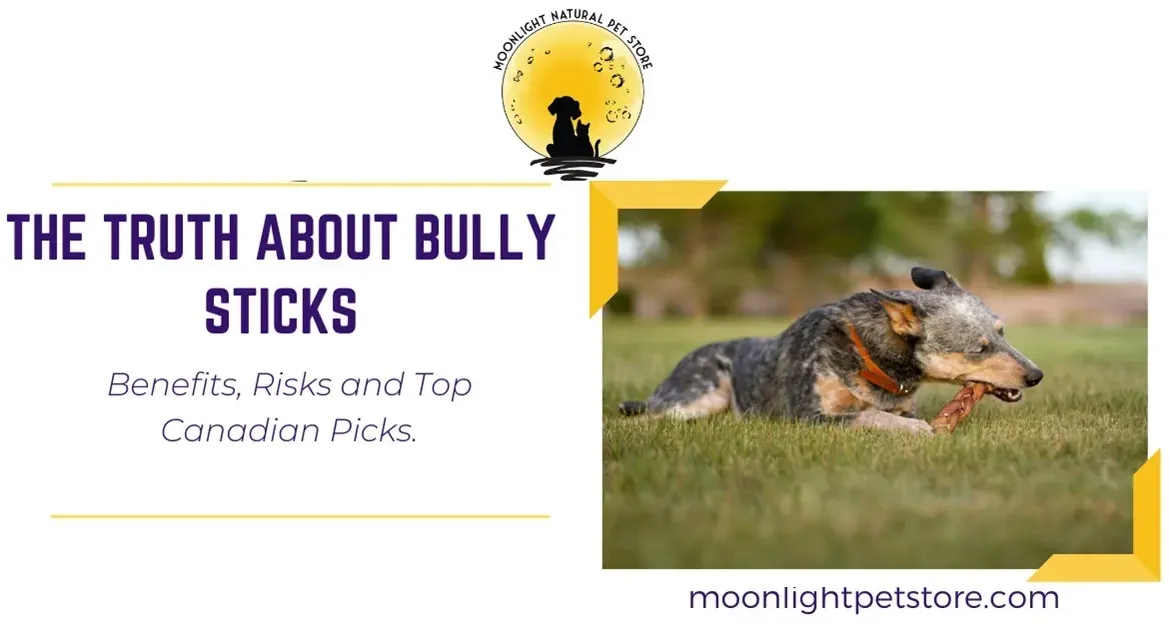
Are Bully Sticks Safe? Benefits, Risks & Top Bully Sticks in Canada (2025 Guide)
Bully Sticks for Dogs: Benefits, Risks, Safety & the Best Canadian Options
Looking for a natural dog chew that keeps your pup busy while supporting dental and digestive health? Bully sticks remain one of the most recommended long-lasting chews by trainers, holistic stores, and many veterinarians—when chosen and used correctly.
If you’re wondering what bully sticks actually are, whether they’re safe, and how to choose the best ones —we’ve got you covered. This guide explains exactly what bully sticks are, how digestible they are, and how to choose the best ones in Canada.
What Are Bully Sticks Made Of? Ingredients & Nutritional Profile
What is a bully stick for dogs? Bully sticks are made from 100% beef—specifically, dried bull penis or pizzle. No additives, no mystery ingredients. Just protein-rich, single-ingredient chews dogs love. They’re considered a safe alternative to rawhide because they are fully digestible.
Common names include:
- Bully sticks
- Pizzle sticks / bull pizzle
- Bully bites
- Bully bones
- Bull sticks
A commonly referenced study found many pet owners—and even some veterinarians—didn’t know what bully sticks were made of.1
Our blog helps solve that knowledge gap: bully sticks are natural animal by-products used responsibly, reducing waste while giving dogs a satisfying, nutritious chew.

How Are Bully Sticks Made (And Why Do They All Look Different?)
Not all bully sticks are created the same—and that’s not a bad thing. The way a bully stick is dried, cooked, or shaped can change everything from its durability to how long it lasts for your dogThe drying method affects:
✔ Odour
✔ Hardness/density
✔ Safety (bacterial control)
✔ Longevity
Typically, high-quality bully sticks are:
- Slowly air-dried or dehydrated at low temperatures. This helps preserve nutrients while removing moisture and bacteria.
- Made from fresh, properly cleaned raw pizzles
- Dried long enough to reduce moisture (and odour)
These are the chews that tend to be denser, tougher, and last longer.
Lower-grade bully sticks are:
- Cooked at high temps
- More brittle or hollow
- Darker in colour
- Sometimes smell stronger
They’re usually more budget-friendly, but they don’t hold up quite as well if you have a strong chewer.
Shapes vary too: straight, braided, ring-shaped, spirals, pretzels, canes, bone-shaped.
These fun formats aren’t just cute—they make your dog work a little harder to chew, which helps with dental health and extends chew time.
Braids and thicker shapes generally last longest.
So, whether your dog is a power chewer or more of a delicate nibbler, there’s a bully stick shape and density that can match their style.
What Are Low-Odour vs. Regular Bully Sticks?
Odour comes from:
- Moisture
- Incomplete cleaning
- Shortened drying times
Brands that freeze fresh raw pizzles immediately after sourcing and clean them thoroughly tend to produce the least-odour chews. The more moisture that’s left in a stick, the stronger the odour.
“Odour-free” bully sticks are never truly scentless—they are low odour until your dog’s saliva activates the natural smell.
Are Bully Sticks Good for Dogs? Benefits of Bully Sticks for Dogs
The benefits of bully sticks for dogs include:
- Natural & digestible: Unlike rawhide, bully sticks when chewed break down fully in the stomach.
- Supports dental health: Chewing naturally scrapes plaque and tartar under the gumline.
- Long-lasting & good for mental stimulation: Great for anxious dogs, puppies, or bored chewers.
- High in protein: A great biologically appropriate snack for dogs.
Dental Health: Do Bully Sticks Actually Clean Dog Teeth?
Chewing on a bully stick scrapes plaque and tartar off your dog’s teeth simultaneously boosting saliva flow. Veterinary experts confirm it aids in oral health—if chewing sessions are supervised.
A study from Rutgers found that “treatments were successful in reducing the amount of bacteria on a dog’s teeth with reductions in bacteria by 79.0%, 70.3%, 60.2% and 54.6% respectively for raw bones, brushing, bully sticks and VeggieDent chews.“2
Are Bully Sticks Safe for Dogs?
Generally, yes—when used properly and with proper supervision.
Risks include:
• Choking hazards (especially end pieces)
• Calorie overload (detailed below)
• Bacterial contamination (rare but possible)
• Dogs swallowing pieces whole.
For puppies, bully sticks are generally safe if you follow the safety rules below.
Safety rules for Bully Sticks
Here are a few things to keep in mind:
- Supervise chewing: Always keep an eye on your pup to prevent choking on small pieces.
- Choose the right size: A tiny bully stick isn’t safe for a large dog. Match the chew size to your dog’s size and chewing strength.
- Limit frequency: They’re nutritious but high in calories. Most dogs should only have one a few times a week. Limiting frequency also ensures your dog empties its bowels of anything that might still be in there so that there is no blockage or constipation.
- Bacteria: reputable brands have their bully sticks tested for E. coli or Salmonella. A study found that “The contamination rate in the current study [1 each (4%) contaminated with Clostridium difficile, MRSA, or tetracy-cline resistant E. coli] was relatively low but should be studied further.”
Are Bully Sticks Digestible for Dogs? What Studies Show
Yes! Studies confirm that bully sticks are highly digestible, much safer than rawhide or nylon chews.
Although a bully stick is made from meat, the process of mastication (chewing) breaks down food to prepare it for swallowing and digestion. It increases the surface area of the food, allowing digestive enzymes to help break down the food into smaller amounts.
However, swallowing large unchewed pieces increases the risk of:
- Gastrointestinal discomfort
- Obstruction
- Pain similar to swallowing a large chunk of meat
If your dog swallows a big piece: monitor and, if distressed, seek immediate veterinary care.
Keeping these in mind, here are our commonsense tips to keep your dog safe:
- Don’t give a bully bone/ stick to a dog that swallows or gulps food down.
- If you have more than one dog and they are competitive, keep them separate so that they don’t try to finish theirs quickly and try to take the other dog’s bully pizzle.
- Use a bully stick holder which prevents the end of the bully pizzle from being swallowed.
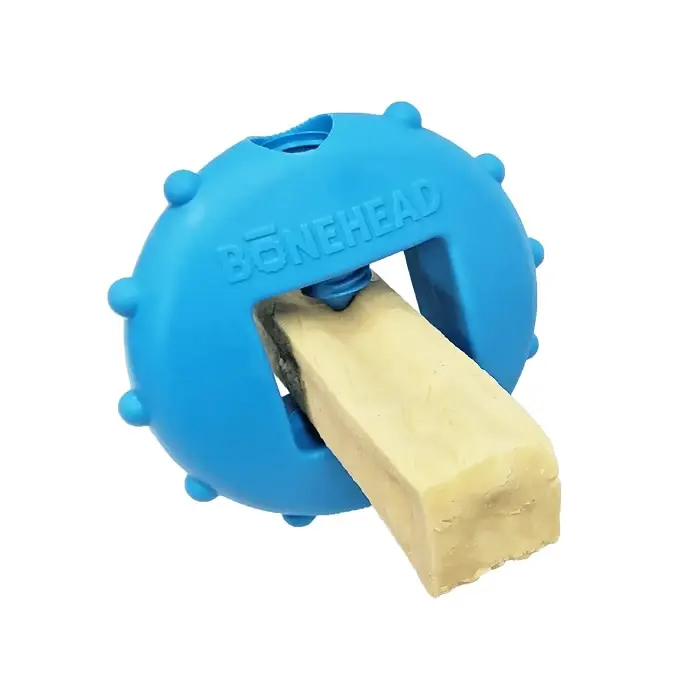 Throw the ends out as they can be unsafe.
Throw the ends out as they can be unsafe. - Get a longer bully chew/ stick as they are tougher to chew and less likely to be swallowed.
- Some people ask how to cut a bully stick. Generally, we do not recommend cutting bully sticks for dogs as the smaller it gets, the higher the risk of swallowing them.
- Supervise your dog during chewing.
- In the event of your dog swallowing a piece of bully stick, monitor your dog for discomfort, e.g. coughing, drooling etc. If your dog is in distress, contact the vet so they can run an X-ray and create next steps. If your dog is NOT in distress, monitor your dog for the next few days until it is pooped out.
How to Choose the Best Bully Sticks in Canada
Here’s what to look for:
- Single-ingredient & hormone-free
- Sourced from North/ South America or grass-fed beef
- Slow-dried
- Odour-reduced or low-moisture
- No preservatives or bleaching
- Size appropriate for your dog
After working closely with many brands and listening to pet parents we’ve handpicked the best bully sticks in Canada that deliver on quality and enjoyment for your dog. Here’s why these brands stand out and we’ve arranged them from least or no odour to having odour:
Shop Nature’s Own Odour-Free Bully Sticks
Known for their natural, odor-reduced bully sticks, Nature’s Own focuses on consistent quality. Their sticks are freshly sourced, cleaned and slowly dried at low temperatures to keep them safe and tasty without that intense smell some bully sticks have.
In addition, Canada Food Inspection Agency requires that their bully sticks are tested for E.coli and Salmonella as they are imported from South American herds that range outside Amazon protected areas.
Shop Great Jacks Odour-Free Bully Sticks
Great Jacks offers durable bully sticks that balance value with quality. Their sticks are less smelly. They come in various sizes to suit different breeds and chewing preferences, making them a solid choice for everyday treats.
Shop Open Range Reduced Odour Bully Sticks
Open Range bully sticks are carefully processed to ensure premium quality and durability. These sticks are perfect if you want a longer-lasting chew with minimal odor. They’re made from responsibly sourced beef, supporting both your dog’s health and sustainable practices.
Shop Vital Essentials Freeze-Dried Bully Sticks
Vital Essentials brings something unique with their freeze-dried bully sticks made from 100% grass-fed beef. These are ideal for dogs who are new to bully sticks, puppies, or seniors with sensitive teeth. The freeze-drying locks in nutrients but results in a lighter chew that isn’t as long-lasting—perfect for gentle, nutritious snacking. However, because freeze-drying is an expensive process compared to dehydration, these bully sticks tend to be quite pricier compared to their dehydrated counterparts.
Shop Puppy Love Canadian Bully Sticks
Puppy Love is a proud Canadian brand offering a variety of natural bully chews like their Beef Curly, Beef Barbell Chew, and Jr. series. Note that Puppy Love bully sticks are known for a strong odour which seems to really attract dogs. Each design adds a fun challenge to keep your dog entertained while promoting dental health by scraping away plaque and tartar. Made from Canadian beef with no artificial additives, Puppy Love chews are a wholesome treat your dog will love.
Which Dogs Should (and Shouldn’t) Have Bully Sticks?
Dog chew bully sticks are ideal for:
- Puppies teething
- Moderate to heavy chewers
- Anxious dogs needing enrichment
They’re not ideal for:
- Dogs that gulp instead of chew
- Dogs on strict low-calorie diets
- Some senior dogs with painful teeth
How Often Should Dogs Have Bully Sticks? (Calories Matter!)
A research paper showed that
- “bully sticks could provide between 54 to 132 kcal for a 6″ bully stick and
- 108 to 264 for a 12″ bully stick.”1
In this case, “If the mean for a 6″ bully stick were used (i.e., 90 kcal),
- For a 50 lb dog, one 6″ bully stick = ~9% of daily calories.
- For a 10 lb dog, one 6″ bully stick = ~30% of daily calories.1
This means that if you should reduce your dog’s food portions to account for the increased calories from bully sticks as these are supplemental to your dog’s meal.
Beef-Free Bully Sticks for Dogs with Beef Allergies
If your dog has a beef allergy or sensitivity, don’t worry—there are beef-free bully stick alternatives.
- One popular option is water buffalo bully sticks. They’re a tasty treat and can work well for dogs needing novel proteins. However, water buffalo bully sticks tend to be pricier due to limited supply. Plus, they often have a stronger natural odour compared to beef bully sticks.
- Other natural bully sticks include lamb pizzle and
- Pork pizzle.
Bully Stick Alternatives (Just in Case)
If bully sticks aren’t a fit for your pup, you might also like:
- Yak chews: Long-lasting, but from yak milk.

- Beef tendons: Great for joint support
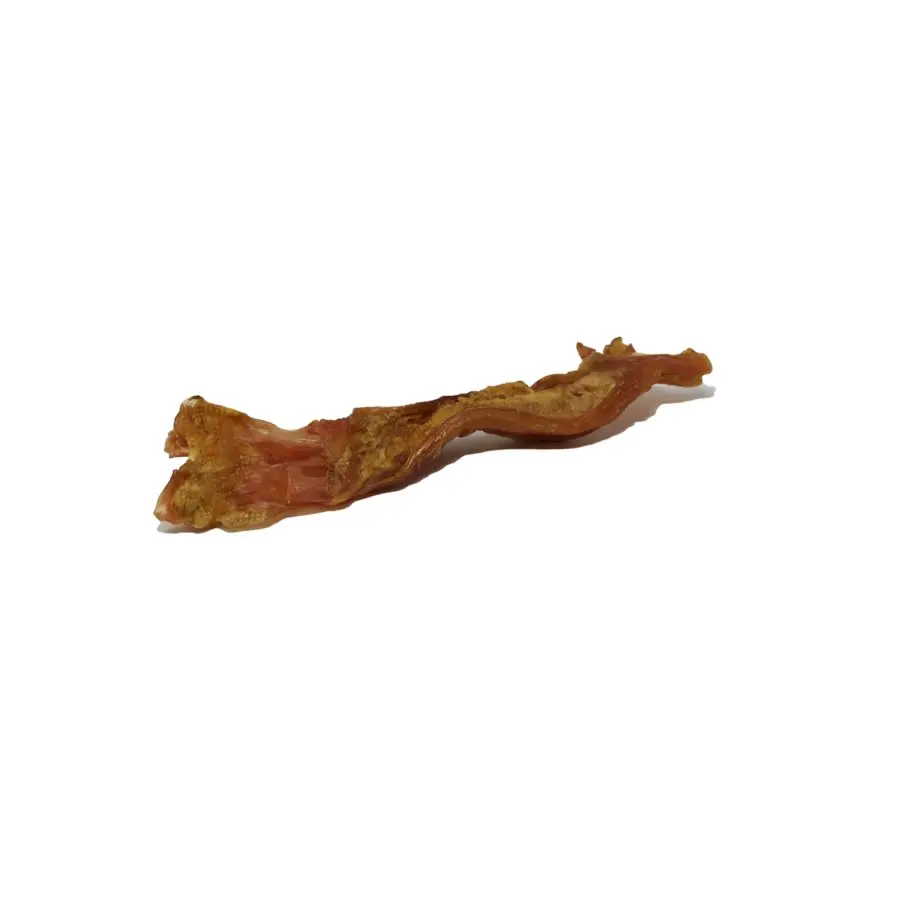
- Dehydrated trachea or ears: Crunchy & fun
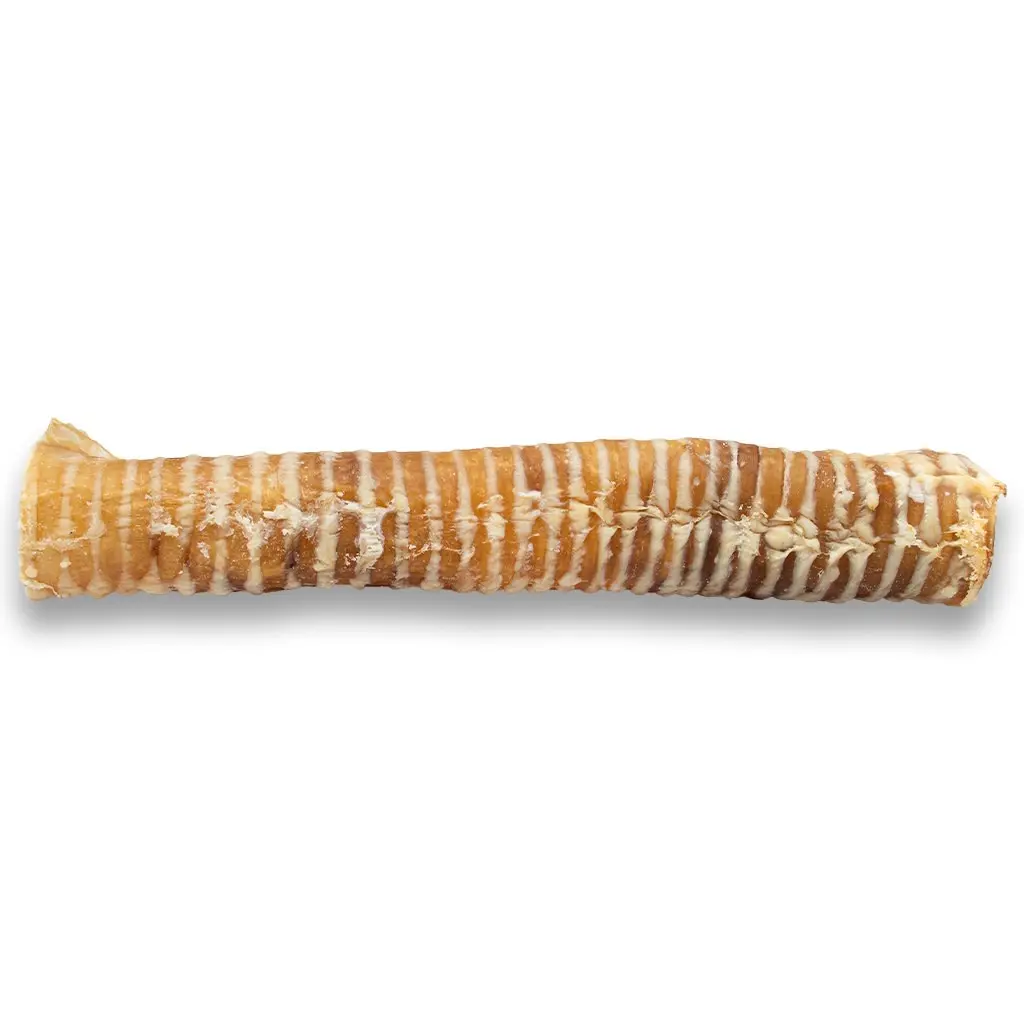
- Natural antlers: Odourless & ultra-durable
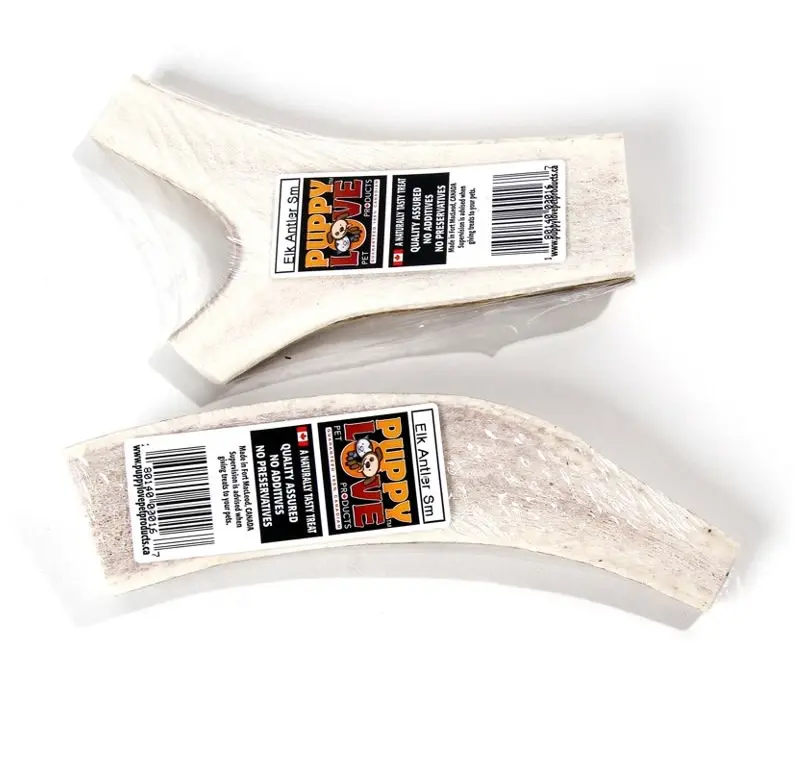
Bully Sticks- Dogs Canada: Frequently Asked Questions
How Long Do Bully Sticks Last?
That really depends—every dog chews differently! Factors like your dog’s chewing style, the size and thickness of the bully stick, and their chewing enthusiasm all play a role. If you want a longer-lasting chew, bully sticks generally outlast softer treats like pig ears. In addition, braided bully sticks and thicker bully sticks tend to last longer. Over time, your dog can become a specialist for chewing so they may take less time compared to before.
How Often Should I Give My Dog Bully Sticks?
While dogs adore bully sticks, feeding them daily can add up in calories. To keep treats balanced, aim for every other day or a few times a week. This way, you can control calorie intake and still give your pup a satisfying chewing experience.
Can Bully Sticks Spread Bacteria?
Like any natural animal product, bully sticks can carry some bacteria. A small study found bacteria like Clostridium difficile and E. coli in a few bully stick samples. But don’t panic— adult dogs’ digestive systems handle bacteria much better than humans. Unless your dog has a weakened immune system, bully sticks are generally safe. Just like with any treat or food, good hygiene and moderation are key. Always wash your hands after handling a dog chew. In addition, choose brands that test for E.Coli and Salmonella.
What is a Bully Stick Made of?
Bully sticks are made from 100% dried bull penis or pizzle. No additives, no mystery ingredients. Just beef.
Where to Buy Bully Sticks in Canada
Shop premium, low-odour bully sticks at Moonlight Natural Pet Store. Shop online or visit us in-store at Moonlight Natural Pet Store (Vancouver, BC).
Always supervise chewing and ensure fresh drinking water is available. Your dog’s teeth (and your shoes) will thank you.
References
- Nutritional and microbial analysis of bully sticks and survey of opinions about pet treats by Lisa M Freeman, Nicol Janecko, J Scott Weese
- The Effect of Dental Products and Natural Chews on Canine Oral Bacteria by Lindsay Gallagher


